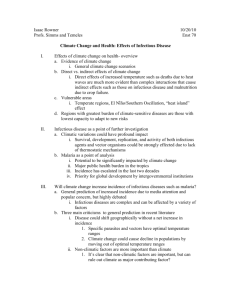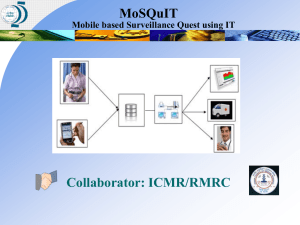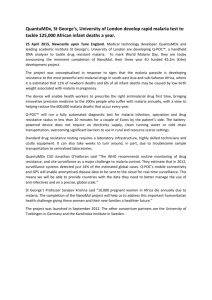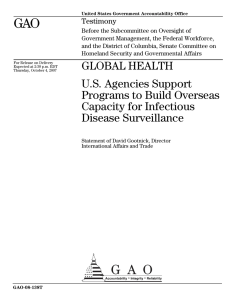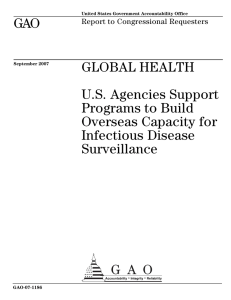Power Point Presentation
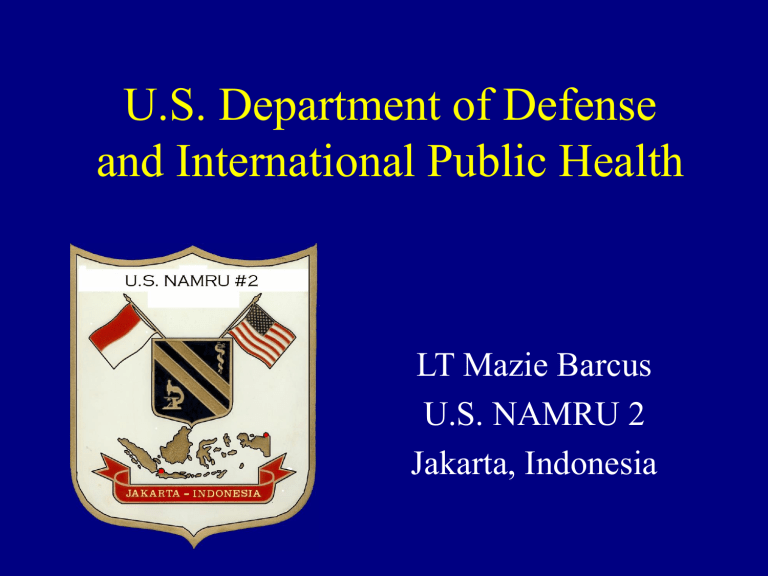
U.S. Department of Defense and International Public Health
LT Mazie Barcus
U.S. NAMRU 2
Jakarta, Indonesia
DoD Overseas Laboratories
OCONUS Medical Research Units
Central Coordinating Hub
Peru
WRAIR
NMRC
Egypt
Kenya
Indonesia
Thailand
Mission of the Overseas Labs
• Conduct scientific research on infectious diseases of military importance
– Overlap between military relevance and host-nation public health priorities
– Technology transfer to host nation
• Global Emerging Infections System
– 1996 Presidential Directive
– Surveillance of emerging and re-emerging infectious diseases
– Host-nation capacity building
DoD GEIS Initiatives
1. Enhance surveillance and response components of international public health infrastructure
– Surveillance for drug-resistant malaria, antibioticresistant enteric organisms, influenza, and unexplained febrile illness
– Partnering with international aid organizations and foreign health ministries to improve their ability to participate in an international surveillance network
DoD GEIS Initiatives
2. Enhance biomedical and behavioral research efforts on emerging infectious diseases
– Collaborate with Military Infectious Disease
Research Program
– Use GEIS-generated surveillance data to guide research efforts in areas like drug development
DoD GEIS Initiatives
3. Expand formal training and outreach to health care providers
– Support training of foreign scientists, epidemiologists and technicians
– Outbreak investigation courses, health care provider courses, technology transfer
DoD GEIS Initiatives
4. Encourage high priority status for emerging infectious diseases and support
WHO and other bodies in playing a stronger role in the surveillance, prevention, and response to emerging infectious diseases
– Building bridges between international aid agencies, donor agencies, foreign governments, militaries and the UN.
GEIS at NAMRU-2
Surveillance for drug-resistant malaria
NAMRU-2 Organized an
Intervention
• Address the immediate threat of epidemic malaria in the Menoreh Hills
– Ministry of Health: CDC and NIHRD
– Provincial Health Officers
– District Health Officers
• WHO in Geneva
– Effective therapy
• USAID/Jakarta
– US$500,000 via WHO
NAMRU-2’s Direct Role in the
Intervention
• Provided plan of action for the intervention
• Engaged international agencies for monetary support
• Training and infrastructure for post-marketing surveillance of Coartem
• Monitored the impact of the intervention
– monitoring passive surveillance data
– pre- and post-intervention prevalence surveys
• Operational research in the Intervention Area
– Vector bionomics
– Clinical trial of CQ + S/P
– Malaria KAP study
NAMRU-2’s Continued Efforts
Against Malaria on Java
Transition from unsustainable intervention to sustainable capacity building
Incubate and nurture a NGO that can partner with USAID and other donors to re-build the infrastructure for malaria control
USAID/NAMRU-2 Partnership
• Agreement to bring long-term USAID resources to bear on malaria problem on Java
– $4 million over 4 years
• Utilize NAMRU-2’s assets in the region to reestablish malaria control infrastructure
– 32 year relationship with Ministry of Health partners
– Resident expertise in malaria
– Working relationships with international agencies engaged in malaria control
Goals of the USAID/NAMRU-2
Collaboration
Capacity building along 5 tracks:
– Community Participation
– Diagnosis
– Treatment
– Vector Control
– Surveillance
International Public Health and the DoD
• Mission: infectious disease research of military importance
– Convergence of purposes with developing countries’ public health threats
– Technology transfer to host nation
• GEIS: fully-sanctioned platform for capacity building in infectious disease surveillance and control

